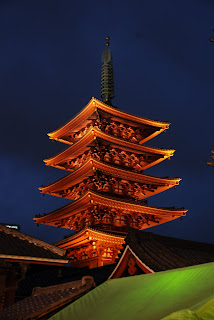 OK... so you don't usually take time out to review bathroom technology. But then again you're not in Tokyo everyday with easy access to the showroom of Toto Corporation, the world leader in toilet & bathroom technology!
OK... so you don't usually take time out to review bathroom technology. But then again you're not in Tokyo everyday with easy access to the showroom of Toto Corporation, the world leader in toilet & bathroom technology!It's kind of hard to describe the vibe in this cool showroom; even photos don't do it justice. It's very future/modernistic, while, at the same time, quiet and Zen like.
Of course, there are fringe benefits; going to the loo allows you to test drive some of the latest models on display in the showroom. Models with remote control features, seat warmers, bidets are standard issue. Models that sense your approach and open the lid automatically are a little extra. But, who couldn't enjoy this luxury? Of course, all kinds of functions for hands-free (meaning hygienic) cleaning are available. Ever had your back-side blow dried? It's not often you wish you could sequentially move down a line of stalls; each sports a different top-end Toto model with unique functions worthy of trial.
You can drop a load in more ways than one; a particular tub on display cost a cool $27,000. More modest toilet models still retail for over $1,000. However, this might be seen as an investment, given frequency of use.
The latest bath models connect the ofuro with the gas company's system. This is true in our apartment, which sports some of Toto's latest hardware, which got the kids excited about visiting the museum in the first place. A speaker in the kitchen area speaks to you in Japanese telling you that the bath's ready. Sweet.
Given the aging population here, many models cater to older demographics, providing ease of ingress and egress to people with disabilities or limited movement. My parents, in fact, after visiting our old apartment in Tokyo, came back to the States & ordered up a Toto loo. I have a feeling that as Anne & I go into retirement, a Toto will be on our list!














